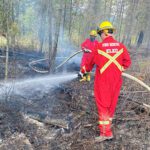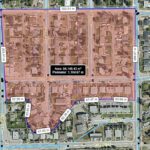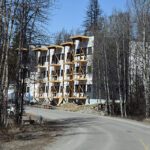Home »

Local views of the recently announced grizzly plan
On Oct. 24 the B.C. government announced it is going to develop a provincial grizzly bear management plan based around a recently released Auditor General’s report that makes 10 recommendations about the management of grizzly bear populations in the province.
The report states that habitat loss and degradation are the single largest threat to grizzly populations across the province, a fact both Wildsight and the region’s two Liberal MLAs pointed out in responses to the government announcement.
The report points to the expansion of oil and gas, forestry and human settlement and increasing backcountry access through the proliferation of resource roads as the greatest threats to grizzly bear populations.

“The report is right on the mark and highlights many of Wildsight’s longstanding concerns,” said John Bergenske, Wildsight’s Conservation Director. “We welcome the provincial government’s commitment to take action on the Auditor’s recommendations and we look forward to working with them, and all concerned British Columbians, to make sure our grizzlies are protected.
“The same threats to grizzly bears are threats to other wildlife populations in the Kootenays. To stop the decline of wildlife populations, we must bring habitat fragmentation from development and our ever-increasing network of backcountry roads under control. This isn’t rocket science: grizzlies need habitat and room to roam, with minimal disturbance. Without habitat, nothing else we do will be effective.”
“Conservation biologists have been telling us for decades that a combination of protected areas and careful ecological management of the landscape to maintain habitat and connectivity is fundamental to maintaining healthy wildlife populations,” Bergenske said.
Kootenay East MLA Tom Shypitka and Columbia River-Revelstoke MLA Doug Clovechok issued a joint statement regarding the provincial government announcement, which noted the fact that hunting is not the biggest threat to the bears and asks ‘why ban hunting?’
“The efforts of the Auditor General and the fact the NDP plans to enact a management strategy for the grizzly bear population is admirable, and is something the B.C. Liberal government had been advocating for the past couple of years. However, before considering the management of the grizzly population, one must consider the overall management of wildlife and habitat and where the bears fit in with that plan.

“As members of the community as well as Opposition members, we have some concerns over parts of the recent announcement.
“The Auditor General states quite clearly that hunting is not the greatest risk to the number of grizzlies, something the B.C. Liberal government had been suggesting for years. As a matter of fact, approximately 1.7% of grizzly population is harvested each year by hunters or guide outfitters.
“Our major concern is that even though the Auditor General recommends the population of grizzly bears needs to be managed, and explicitly states that hunting is not the main contributing factor to the decline in populations, the Auditor General continues to refer to the grizzly bear hunt as a trophy hunt.
“The term ‘trophy hunt’ should not be recognized when managing an over-populated species, especially when hide, head, claws are recovered. The recovery of these items supports the utilization of the entire carcass and not just the meat. To allow these parts of the carcass to be shamefully discarded in the wilderness or worse yet, in a landfill, when collecting data for scientific purposes is disrespectful and goes against social and cultural values that are shared by Aboriginal and non-Aboriginal alike,” the MLAs stated.
“The second area of concern is that there is a lot of data to be collected for an effective wildlife and habitat plan to be implemented, and that will cost a great deal.

Government has dedicated zero dollars to this so far in its preliminary budget. Regional and provincial stakeholders agree that tens of millions of dollars will be needed to see a proper management plan go through. A grizzly bear conservation plan cannot succeed without first identifying a strategy for an inclusive wildlife and habitat plan.
“Simply stated, a grizzly bear population plan is only a small subset of a greater wildlife and habitat plan. This is a major issue for our region, one that needs to be addressed quickly before it escalates and we sincerely hope this plan is of high priority and can be expedited by the joint efforts of the Ministry of Forests, Lands, and Natural Resource Operations and Ministry of Environment.”
Finally, the MLAs question why regional representation has not been made a priority in this report.
“We, and many others, believe that regional input is an absolute must when it comes to considering our diverse provincial ecological landscape. We expect a complete wildlife management plan that, among other things, includes habitat recovery, funding for pure science-based relevant data, and regional representation that supports our unique uses and ecological landscape.
This is only a small snapshot of the potential issues that we’ve found. As your MLAs, we will hold this government to account on this proposal and look forward to working with government to ensure this plan is put in place as quickly as possible,” Shypitka and Clovechok concluded.
e-KNOW







